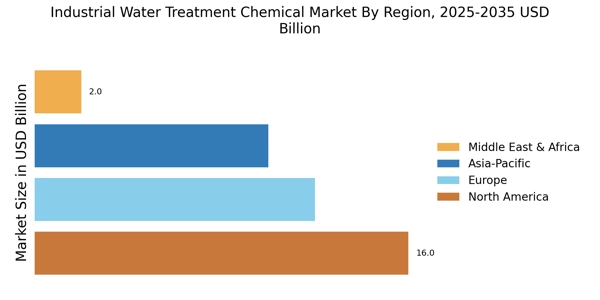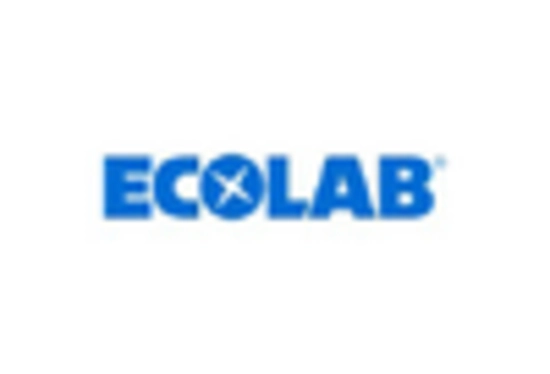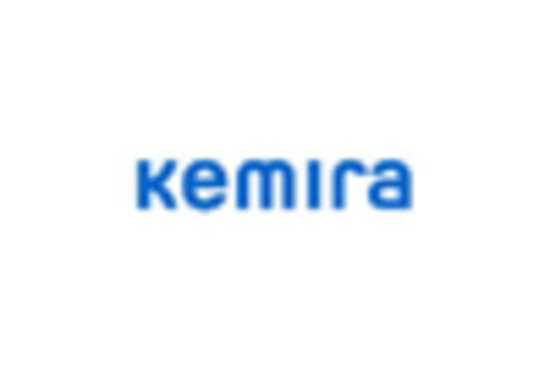The Industrial Water Treatment Chemical Market is currently characterized by a dynamic competitive landscape, driven by increasing regulatory pressures and a growing emphasis on sustainability. Major players are actively pursuing strategies that enhance their market positioning, focusing on innovation, regional expansion, and strategic partnerships. Companies such as Ecolab (US) and BASF (DE) are at the forefront, leveraging their extensive research and development capabilities to introduce advanced water treatment solutions. This collective emphasis on innovation and sustainability is reshaping the competitive environment, as firms strive to meet the evolving demands of industrial clients while adhering to stringent environmental regulations.
In terms of business tactics, key players are increasingly localizing manufacturing and optimizing supply chains to enhance operational efficiency. The market appears moderately fragmented, with several companies vying for market share. However, the influence of major players like Dow (US) and Veolia (FR) is substantial, as they implement strategies that not only improve their competitive edge but also set industry standards. This competitive structure suggests that while there is room for smaller entrants, the dominance of established firms is likely to persist due to their resources and technological advancements.
In August 2025, Ecolab (US) announced a strategic partnership with a leading technology firm to develop AI-driven water treatment solutions. This collaboration aims to enhance predictive maintenance capabilities and optimize chemical dosing, thereby improving operational efficiency for industrial clients. The strategic importance of this move lies in Ecolab's commitment to integrating cutting-edge technology into its offerings, which could significantly enhance customer satisfaction and retention in a competitive market.
In September 2025, BASF (DE) unveiled a new line of biodegradable water treatment chemicals designed to meet the growing demand for environmentally friendly solutions. This product launch not only aligns with global sustainability trends but also positions BASF as a leader in eco-friendly innovations within the water treatment sector. The strategic significance of this initiative is profound, as it reflects the company's proactive approach to addressing environmental concerns while expanding its product portfolio.
In October 2025, Dow (US) completed the acquisition of a regional water treatment company, enhancing its market presence in Asia-Pacific. This acquisition is expected to bolster Dow's capabilities in providing tailored solutions to local industries, thereby strengthening its competitive position in a rapidly growing market. The strategic importance of this acquisition lies in Dow's ability to leverage local expertise and resources, which could lead to increased market penetration and customer loyalty.
As of October 2025, the competitive trends in the Industrial Water Treatment Chemical Market are increasingly defined by digitalization, sustainability, and the integration of advanced technologies such as AI. Strategic alliances are becoming more prevalent, as companies recognize the need to collaborate in order to innovate and meet regulatory demands. Looking ahead, competitive differentiation is likely to evolve from traditional price-based competition to a focus on innovation, technological advancements, and supply chain reliability, underscoring the importance of adaptability in a rapidly changing market.


















Leave a Comment